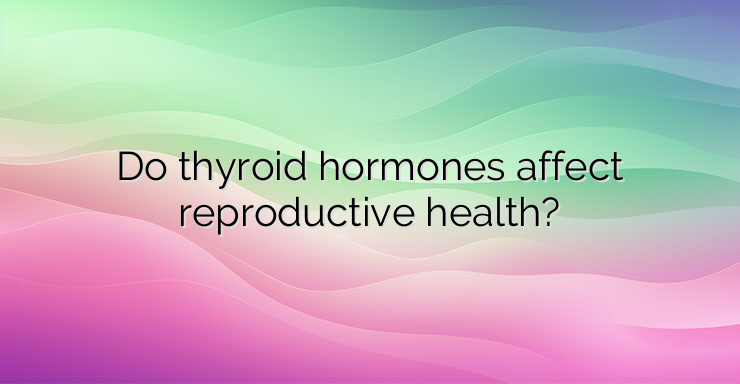Thyroid hormones are vital for normal female reproductive function. L-thyroxine (T4) and L-triiodothyronine (T3) act directly on ovarian, uterine and placental tissues through specific nuclear receptors that modulate the development and metabolism of these organs. In addition, they act indirectly through multiple interactions with other hormones and growth factors, such as estrogen, prolactin, and insulin-like growth factor, and by influencing the release of gonadotropin-releasing hormone in the hypothalamic-pituitary-gonadal axis. Therefore, changes in serum thyroid hormone levels, such as hypo- and hyperthyroidism, can lead to subfertility or infertility in women. Thyroid dysfunction is usually acquired and can occur at any time in life. Hypothyroidism usually results from autoimmune thyroiditis, in which the body’s own antibodies react against key thyroid proteins, such as thyroperoxidase and/or thyroglobulin, leading to destruction and loss of gland function. The occurrence of hypothyroidism in women is associated with reproductive disorders, such as delayed onset of puberty, anovulation, ovarian cysts, menstrual disorders, infertility, increased incidence of spontaneous abortions, and the birth of premature infants with low birth weight and congenital anomalies. Research has recently shown that these gestational changes also result from compromised placental development, with reduced proliferation and increased apoptosis of trophoblast cells and failure of intrauterine migration associated with changes in the endocrine, immune, and angiogenic profiles of the interaction between the fetal organism and that of the mother. The prevalence of hyperthyroidism in women of reproductive age is 1.3%, and the disease usually occurs as a result of an increase in antibodies against the thyroid-stimulating hormone receptor, which is known as Graves’ disease. Data supporting the association of hyperthyroidism with infertility are still scarce and sometimes conflicting. Although its prevalence is lower than that of hypothyroidism, the occurrence of hyperthyroidism is also associated with menstrual disorders, increased follicular atresia, and ovarian cysts. Maternal to fetal transfer of thyroid hormin during pregnancy varies between women. This process depends on the type of placenta, which will affect the expression of transport molecules, binding proteins and D3 activity. D3 has high expression in the uterus, placenta, and amniotic membrane, where it plays an important role as an enzymatic barrier to the excessive transfer of maternal thyroid hormones to the developing fetus. T3 levels in amniotic and coelomatic fluid and in fetal blood are known to be consistently low during pregnancy, and fetal T3 is mainly produced locally by the activity of D1 (deiodinase type 1) and D2,as fetal T3 production from hepatic D1 is considered the major endocrine source of circulating T3. Thyroid receptor isoforms have been shown to be present in the placenta and their expression increases with fetal age. In humans, these receptors are present in both the interstitial trophoblast and the extravillous trophoblast, with strong expression mainly in the latter. At the end of the first trimester of pregnancy, the serum concentration of human chorionic gonadotropin, which is produced by the placenta, is sufficient to bind to the TSH receptor and partially stimulate the activity of the maternal thyroid gland. References: 1. Evans RW Farwell AP Braverman LE Nuclear thyroid hormone receptor Endocrinology 2. Mukku VR Kirkland JL Hardy M Stancel GM Evidence for thyroid hormone receptors in uterine nucleus Metabolism 3. Maruo T Katayama K Barnea ER Mochizuki MA role for thyroid hormone in the induction of ovulation and corpus luteum function. Horm Res 4. Galton VA Martinez E Hernandez A Germai E St, BatesJM St Germain DL The type 2 iodothyronine deiodinase is expressed in the rat uterus and induced during pregnancy Endocrinolog. Placental transport of thyroid hormone


Leave a Reply